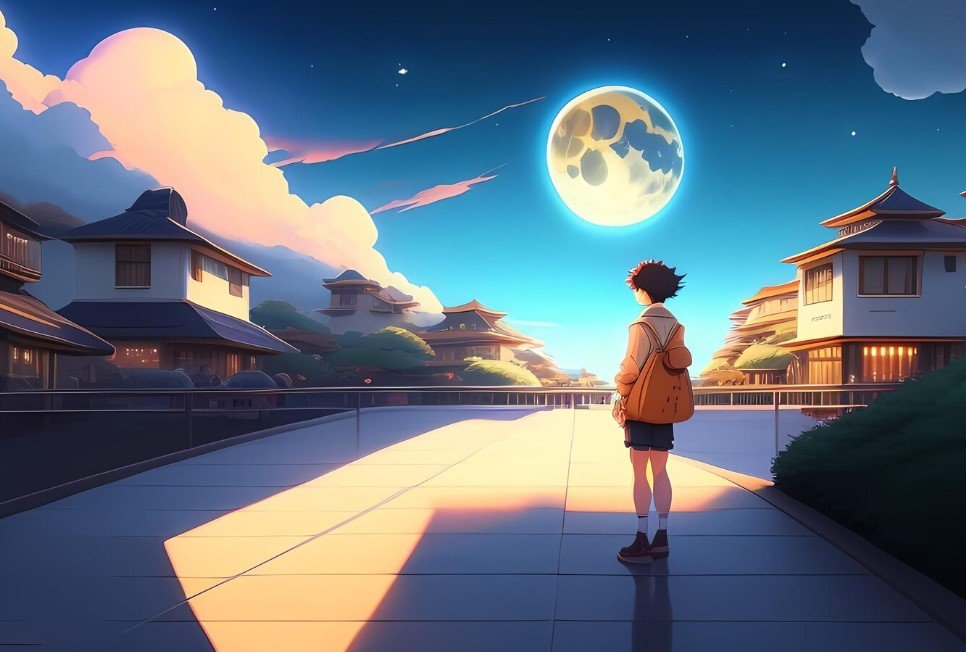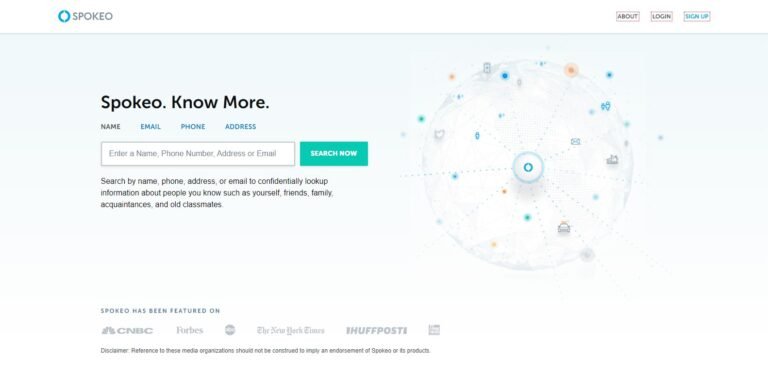Kids love anime because it has cool characters and interesting stories. People enjoy watching it over and over. But some parents wonder “Is anime bad for kids?” This article will talk about the good and not-so-good things about anime for children. It will also share ways to keep kids safe from any bad effects of watching anime.
>> Don’t Miss:
- Is Kik Safe? A Detailed Kik App Review for Parents
- GroupMe App Review 2025: Is GroupMe Safe for Kids?
- Is GoGoAnime Safe and Legal? Parent’s Safety Guide 2025
- How to Spot Fake Calculator App in 2025: A Detailed Guide
- How Can I Monitor My Child’s Phone Without Them Knowing 2025
What Is Anime? Key Points for Parents
Anime, deeply rooted in Japanese culture, takes its name from “animation.” Unlike cartoons in many countries, anime caters to diverse age groups. It includes series, short films, and full-length features, offering a variety of themes and characters. Notably, anime’s unique artistic style features strikingly large eyes on characters.
Anime artists use special techniques like close-ups, zooms, and vibrant colors to make the animation more emotional and impactful. People love anime for its unique appearance, detailed characters, and interesting stories. So, anime is a type of Japanese animation with a style that many people enjoy.
Interestingly, the eye size correlates with the character’s personality—a window to their soul. Large, clear eyes often represent kind and sincere traits, while narrowed, “bird-like” gazes convey sly and mysterious qualities.
Anime encompasses diverse genres and themes. For parents, key points include:
- Visual Style: Anime is characterized by vibrant visuals, colorful artwork, and distinctive character designs.
- Diverse Genres: Anime covers a broad spectrum, from action and adventure to romance, fantasy, and science fiction.
- Cultural Variations: Themes, storytelling, and humor in Anime may reflect Japanese culture, offering a unique viewing experience.
- Age Ratings: Pay attention to age ratings and content warnings. Some Anime is tailored for specific age groups.
- Sub vs. Dub: Anime is available in subtitled (sub) or English-dubbed (dub) versions. Consider your child’s preference.
- Explore Together: Engage with your child, explore Anime together, and discuss content to ensure appropriateness.
Understanding these aspects equips parents to make informed decisions about their children’s Anime choices.
What Age Is Appropriate for Anime?

Anime encompasses a vast array of genres and styles, making the answer to whether it’s suitable for children not straightforward. Here are some types of anime and their target audiences:
Kodomo (For children under 12):
- Example: “Pokémon”
- This anime features the adventures of a young Pokémon trainer named Ash and his friends as they explore the Pokémon world, emphasizing friendship and teamwork.
Sen (For older boys 12 to 16-18 years):
- Example: “Attack on Titan.”
- Follows the journey of Naruto Uzumaki, a young ninja with dreams of becoming the strongest ninja and leader of his village, exploring themes of friendship, determination, and perseverance.
Shojo (For older girls 12 to 16-18 years):
- Example: “Sailor Moon”
- Revolves around Usagi Tsukino, a teenage girl who transforms into Sailor Moon to protect the world, focusing on themes of love, friendship, and self-discovery.
Seinen (For young men 18+):
- Example: “Berserk”
- A dark fantasy anime that explores complex themes like the nature of humanity, morality, and the consequences of one’s choices, often containing mature content.
Josei (For young women 18+):
- Example: “Paradise Kiss”
- Follows the story of a young girl navigating the challenges of relationships and adulthood, addressing themes of love, career, and personal growth.
It’s crucial to consider that anime, like conventional cinema, comes in various genres such as comedy, drama, adventure, horror, mystery, thriller, action, erotic, and pornographic (hentai), among others. Hentai is an anime genre with explicit adult content, intended for mature audiences with an 18+ rating, often misunderstood and causing unnecessary concern.
Is Anime Bad for Mental Health?
Anime covers diverse genres and age restrictions. It’s crucial to consider age-appropriate content, as exposing children to themes beyond their years may potentially impact their psyche. This principle holds for all media forms, including Japanese animation.
Some anime shows are not good for kids because they may have violence, inappropriate content, and a negative fan base. Researchers say that kids who watch a lot of anime might have mental health issues. Some anime episodes can make you lose touch with reality. Some anime is also not respectful towards certain groups of people.
But if you choose to watch good anime, it can be okay. Good anime shows can teach you things, like being patient and working hard. They can also show you how to improve your relationships with family and friends. However, not all anime shows for kids are the same, and you may not get to choose what you watch.
Anime’s Positive Aspects:
- Cultural Awareness: Explores Japanese culture and language, offering kids insights into different societies and languages.
- Creativity and Imagination: Showcases imaginative worlds, characters, and stories, fostering creativity in young minds.
- Moral and Ethical Lessons: Many series include valuable life lessons, moral dilemmas, and character development.
- Diverse Representation: Features diverse characters, backgrounds, and perspectives, promoting understanding and appreciation of diversity.
- Storytelling Complexity: Intricate storylines enhance critical thinking and narrative comprehension skills.
- Variety of Genres: Offers content for all ages, from fairy tales for children to adventures for teenagers and deep narratives for adults.
Anime’s Drawbacks:
- Inappropriate Themes: Addresses mature themes like death and sexuality, potentially confusing or distressing for young viewers.
- Violence and Graphic Content: This may contain violence and explicit material unsuitable for children.
- Unrealistic Body Proportions: Some characters exhibit exaggerated features, contributing to unrealistic body image standards.
- Language and Cultural Differences: Often in Japanese with subtitles or dubbing, which may not be suitable for language development.
- LGBTQ+ Stereotypes: While awareness is growing, some storylines may perpetuate stereotypes, requiring sensitivity.
- Excessive Screen Time: Colorful, complex worlds can lead to excessive screen time if not monitored.
- Interpretation of Ideas: Philosophical subjects may be handled differently in Japanese culture, prompting the need for parent-child discussions for better understanding.
Why Is Anime Bad for Kids and What Are Its Negative Effects?
Why is Anime bad for kids? Certain anime shows can hurt kids because children tend to imitate what they see. Some anime characters engage in violence and use inappropriate language, which may appeal to kids. It’s essential to avoid exposing children to inappropriate anime shows, as anime is generally created for adults, though kids may also watch it. Parents need to be aware of potential issues:
Unclear Target Audience:
- Anime’s distinct art style may make it challenging to identify the target audience at first glance. Some anime might appear suitable for children until unexpected violent or mature scenes emerge.
Effects of Anime Addiction:
- Kids often turn to anime to escape their surroundings, leading to neglect of family and co-curricular activities. This addiction can result in depression, anxiety, and a decline in academic performance. Unlike teenagers, kids may not discern between good and bad content or manage their viewing time, contributing to addiction.
- Also, long-form anime series, with potentially hundreds of episodes, can lead to binge-watching addiction. The absence of specific seasons and the presence of cliffhangers contribute to prolonged viewing.
Pornographic Content:
- Many kids’ anime shows feature pornographic content, impacting children’s mindsets and fostering negativity. Exposure to such content may lead to harmful habits, including sexting. Pornographic content tends to shape unrealistic expectations, and unfulfilled desires can result in disrespectful behavior and, in extreme cases, violence.
Bloody and Violent Situations:
- Exposure to bloody and violent scenes in anime can desensitize children over time. Initially, children may find such situations uncomfortable, but continuous exposure may lead to an acceptance and even enjoyment of violent scenes. This can influence children to think and behave like the characters they see in anime.
Understanding these potential problems allows parents to make informed decisions about the anime content their children consume and take appropriate measures to ensure a safe and age-appropriate viewing experience.
How to Protect Your Kids from Inappropriate Anime?
Parents play a crucial role in guiding their kids through the challenges they face, addressing their concerns, and encouraging them to make positive choices. To safeguard your children from the potential negative effects of watching anime, consider the following tips:
Use Parental Control App for Monitoring
Employing a comprehensive parental control app like KidsGuard Pro provides insights into your child’s mobile activities. It allows you to monitor what your child is watching, the language used with friends, and potential sexting behaviors. This app ensures privacy protection and helps keep your kids safe online. >>Check KidsGuard Pro review

- KidsGuard Pro Key Features:
- Check anime photos and videos on your kids’ Android/iOS devices.
- Monitor messages and record phone screens or calls to detect discussions about explicit anime content.
- Track social app activities such as WhatsApp, Snapchat, Facebook, Instagram, TikTok, and YouTube.
- Review browser history to understand specific anime genres your kids are interested in.
- Monitor keylogger and receive real-time notifications for sensitive keywords.
- How to Use KidsGuard Pro to Protect Your Kids from Inappropriate Anime:
- Create an account with a valid email address and choose a subscription plan.
- Download and install KidsGuard Pro Assistant on the target Android phone or connect an iPhone to it.
- After correct installation, the app runs in the background, syncing data to the KidsGuard Pro dashboard for monitoring.
Learn More About Anime
If your child has developed a keen interest in anime, take the time to research and understand both the positive and negative aspects of anime. Explore questions like whether anime is suitable for kids, its potential drawbacks, and its positive elements. This knowledge can facilitate open conversations with your child and build awareness of anime’s various aspects.
Check Anime Ratings
Similar to movies and TV shows, anime has age ratings. Ensure the anime your child watches is age-appropriate by checking its rating. Different countries have varying rating systems, so it’s essential to be familiar with the system in your region. While age ratings provide guidance, it’s advisable to research specific anime titles for a more nuanced understanding of their content.
Select Anime with Healthy Content
If your child seeks permission to watch anime shows, consider making a deal where you choose the content. This allows you to curate shows with positive and educational content for your kids. Consider your child’s interests when making selections, and if uncertain, involve your child in the decision-making process. Researching parent guides for chosen anime shows ensures they align with both your and your child’s preferences. This approach helps meet the entertainment needs of both parents and kids.
Watch Anime Together
Engaging in anime-watching sessions with your child serves as a fun and bonding activity. This allows you to monitor the content and ensure it aligns with your comfort level. Watching together also provides opportunities for discussions about themes and characters.
By combining these strategies, you can create a safer and more controlled anime-watching environment for your child.
Why Is Anime So Popular Among Children and Teenagers?

Anime, a dynamic phenomenon, adapts to its audience, providing age-appropriate content that aligns with evolving interests and needs. Tailored for older children, it unfolds tales of triumphant coming-of-age journeys, captivating adventures, and characters with a ‘cool’ factor, naturally drawing them in. Moreover, anime becomes a conduit for connections, offering glimpses into diverse cultures, and inspiring some to delve into Japanese language learning for a more authentic viewing experience.
Engaging Storytelling: Anime often features compelling and imaginative storytelling that captivates young audiences. The diverse genres and creative narratives keep viewers invested in the plots.
Relatable Characters: Anime characters are often designed to be relatable and represent a wide range of personalities and experiences. Young audiences connect with characters facing challenges, forming friendships, and navigating adolescence.
Visual Appeal: The unique art style of anime, characterized by expressive eyes, vibrant colors, and dynamic animation, visually appeals to children and teenagers. The visually distinct characters and settings contribute to the overall charm of anime.
Variety of Genres: Anime covers a broad spectrum of genres, catering to different tastes and interests. Whether it’s action, adventure, romance, fantasy, or slice of life, there’s an anime genre for everyone.
Coming-of-Age Themes: Many anime series explores coming-of-age themes, depicting characters facing challenges, discovering their identities, and growing both emotionally and socially. This resonates with teenagers undergoing similar experiences.
Cultural Exploration: Anime often introduces viewers to Japanese culture, traditions, and societal norms. The exploration of a different cultural perspective adds an educational and enriching element to the viewing experience.
Online Accessibility: The availability of anime on online platforms makes it easily accessible to children and teenagers. Streaming services provide a convenient way for young viewers to discover and watch their favorite anime titles.
Fan Communities: Anime has vibrant fan communities where young enthusiasts can share their love for specific series, characters, and genres. This sense of community fosters a deeper connection to the medium.
Emotional Resonance: Anime often delves into deep and emotional themes, addressing issues such as friendship, love, loss, and personal growth. The emotional resonance of anime storytelling creates a lasting impact on young audiences.
Influence of Peers: Peer recommendations and discussions play a significant role in the popularity of anime among children and teenagers. Friends often share their favorite series, creating a social aspect to anime fandom.
In summary, the popularity of anime among children and teenagers can be attributed to its engaging storytelling, relatable characters, visual appeal, diverse genres, coming-of-age themes, cultural exploration, online accessibility, fan communities, emotional resonance, and the influence of peers.
Dispelling Anime Myths: Separating Fact from Fiction
Myths surrounding anime culture often mislead perceptions, so it’s crucial to set the record straight.
1. Only for Children:
- Reality: Anime caters to diverse age groups. While youth-oriented series are prevalent, there are age-appropriate options for adults. Parents should check annotations and ratings for suitability.
2. For Girls Only:
- Reality: Anime’s emotional depth and moral themes make it appealing to all genders, offering content for a diverse audience.
3. Psyche Destruction:
- Reality: Anime’s impact is context-dependent. A child’s well-being is influenced by various factors. Like any entertainment, anime can be an escape or a source of inspiration.
4. All Pornography:
- Reality: Explicit content is confined to the adult genre known as hentai, marked with an 18+ rating.
5. No Benefits for Children:
- Reality: There are both good and bad anime, like any media. Parents should choose age-appropriate and high-quality anime for valuable experiences.
6. Foreign Culture Perception:
- Reality: In a globalized world, exploring different cultures, including Japanese cartoons, fosters tolerance and understanding among children.
Parenting Tips for Anime Lovers
Discovering your child’s interest in Japanese cartoons, commonly known as anime, might raise concerns for some parents. Here’s how to approach it:
Understanding Kids Watching Anime
Step 1: Engage in Conversation Chat with your child to understand the appeal of anime. Watch shows together, discuss plots, and characters, and ask for their thoughts. Keep it friendly to maintain trust and foster emotional intelligence.
Step 2: Set Viewing Time Establish a designated time for anime watching to prevent interference with studies and other activities. This helps create a balanced screen time routine.
Step 3: Address Excessive Viewing If your child’s screen time becomes excessive, explore the reasons behind it. It could be an escape from challenges, family issues, or a quest for excitement. Understanding the underlying motives is crucial.
Tips for Parents of Anime Lovers
As a parent, navigating your child’s interest in anime can be a positive experience. Instead of jumping to conclusions or fearing the worst, consider these tips to foster a healthy relationship with your anime-loving child:
- Designated Viewing Time: Establish a specific time for anime-watching, creating a balanced routine for leisure.
- Guidance on Choices: Teach your child to make age-appropriate and genre-specific selections, promoting responsible viewing.
- Quality Time Together: Spend quality moments with your child, communicate openly, and discover shared activities to build trust and lasting memories.
- Understanding Cultural Nuances: Help your child grasp Japanese symbolism and cultural nuances in anime, enhancing their appreciation.
- Encourage Diverse Hobbies: Motivate your child to explore other hobbies, such as drawing or reimagining visuals from anime, providing a well-rounded real-world experience.
- Monitor Emotional Well-being: Maintain an open and supportive relationship, keep an eye on your child’s emotional well-being, and offer assistance when needed.
By incorporating these guidelines, you can turn your child’s anime interest into a positive and enriching part of their life.
Great Anime for Family Viewing

If you’re looking for fantastic anime suitable for family watching, here’s a list to consider:
- The Witch Delivery Service, 1989 (Rating 6+): Follows the coming-of-age journey of a young witch learning independence. Suitable for children over 6 years old.
- The Return of the Cat, 2002 (Rating 0+): Brave girl Hara rescues a cat, only to discover it’s a prince of the cat kingdom. A magical adventure unfolds, full of dangers and wonders.
- Avatar: The Legend of Aang, 2004–2008 (Rating 6+): Set in a magical world with elemental magicians, 12-year-old Aang, the Avatar, must restore balance amid war by mastering his powers.
- Children of the Sea, 2019 (Rating 12+): Chronicles the adventures of Ruka, a girl on vacation, befriending ocean-raised twin brothers as they investigate the disappearance of sea creatures. Emphasizes the need to preserve the ecology.
- Steel Alchemist: Brotherhood, 2009–2010 (Rating 16+): In a world dominated by alchemy, two brothers embark on a journey to make amends after a tragic event. They face trials, acquire new skills, and forge bonds.
These anime options offer a mix of magic, adventure, and valuable life lessons, making them perfect for family viewing.
Difference Between Anime and Disney Animations
The distinction between anime and Western animations, such as those produced by Disney and Pixar, goes beyond visual aesthetics and extends to storytelling, cultural nuances, and target audiences.
Artistic Style:
- Anime: Anime often features distinct artistic styles with characters having large, expressive eyes, vibrant colors, and detailed backgrounds. The animation style can range from highly stylized to more realistic, depending on the genre.
- Disney Animations: Disney animations typically have a more uniform, Western-influenced style. Characters often have exaggerated features but tend to adhere to a consistent, recognizable design.
Cultural Context:
- Anime: Anime is deeply rooted in Japanese culture, and this cultural influence is often evident in the settings, customs, and social dynamics portrayed in the animations.
- Disney Animations: Disney animations are more reflective of Western culture, drawing inspiration from fairy tales, folklore, and mythology with a distinctly Western narrative approach.
Target Audience:
- Anime: Anime is created for diverse target audiences, including children, teenagers, and adults. There are genres explicitly aimed at specific age groups, and themes can range from lighthearted and comedic to dark and mature.
- Disney Animations: Disney animations traditionally aim for a family-friendly audience, with content designed to entertain both children and adults. They often incorporate humor and visual appeal that can be appreciated by viewers of all ages.
Narrative Complexity:
- Anime: Anime storytelling often delves into complex and multi-layered plots. It explores philosophical and psychological themes, offering deep and thought-provoking narratives.
- Disney Animations: Disney animations generally follow a more straightforward storytelling approach. They feature simpler plotlines and characters that are easily relatable, particularly to a younger audience.
Content Diversity:
- Anime: Encompassing a wide array of genres such as slice of life, mecha, horror, and sports, anime explores diverse topics and can be experimental in its storytelling.
- Disney Animations: While diverse in their own right, Disney animations often revolve around timeless fairy tales, musicals, and adventurous quests. They strongly emphasize optimism and frequently conclude with happy endings.
In summary, while both anime and Disney animations are forms of animated storytelling, they differ in artistic style, storytelling approach, cultural influences, and target demographic, contributing to their unique appeal and characteristics.
FAQs About Anime
Where Do Kids Find Anime?
Kids may discover Anime on YouTube suggestions, but if unfamiliar, they won’t be interested. Another way is through friends, sparking curiosity about kid’s Anime.
What Anime Is Okay for 10-Year-Old?
Ten-year-olds can enjoy kid’s Anime like Shugo Chara, My Hero Academia, Sailor Moon, and Little Witch Academia. If on TV, limit watching until 9 pm.
Here are some examples of anime shows and movies that are suitable for a 10-year-old:
Anime Shows:
- Haikyu!!
- Hikaru No Go
- Little Witch Academia
Anime Movies:
- A Silent Voice
- My Neighbor Totoro
- Spirited Away
These titles are known for their engaging storytelling and age-appropriate content, making them enjoyable for a 10-year-old audience.
When Should Kids be Allowed to Watch Anime?
Anime encompasses both positive and negative content, making it essential for parents to review people’s opinions before permitting their kids to indulge in it. While 12-year-olds can enjoy Anime with suitable content, determining the ideal age for kids to start watching Anime remains subjective and varies based on individual maturity levels. Checking reviews helps parents make informed decisions about the appropriateness of specific Anime for their children.
How to Ensure that Your Child Views Good Content?
You can ensure your kids are watching good Anime by observing their actions. If they spend too much time, display rude behavior, or use inappropriate language, likely, they’re not watching suitable content.
Conclusion
Even though kids’ Anime shows have some harmful effects, it’s essential to acknowledge the good alongside the bad. Research the content and identify vulgar characters to guide your child away from specific shows. Ensure your child doesn’t become addicted to a particular Anime character.
To stay actively involved in your child’s online activities and address concerns about the impact of Anime on their well-being, consider using parental control tools like KidsGuard Pro. This app allows you to monitor your child’s screen activities, including Anime viewing, providing real-time insights into their digital interactions. By staying informed and engaged, you can foster a healthy media environment for your child and address the question of “Is Anime Bad for Kids” with a proactive and informed approach.
>> Learn more parental control tips and guides to safeguard your kids.








